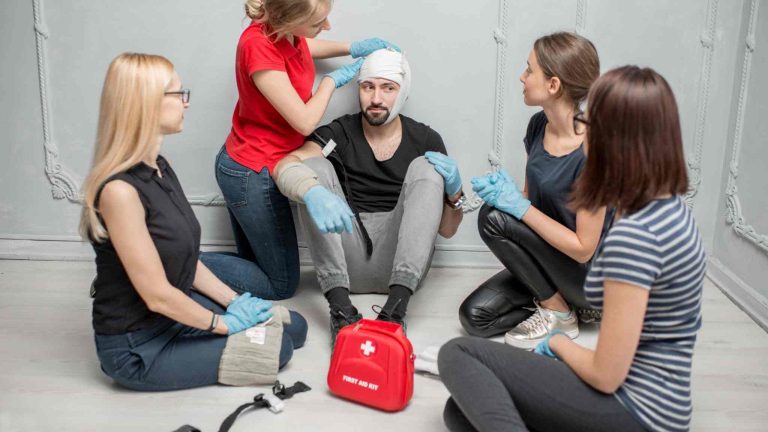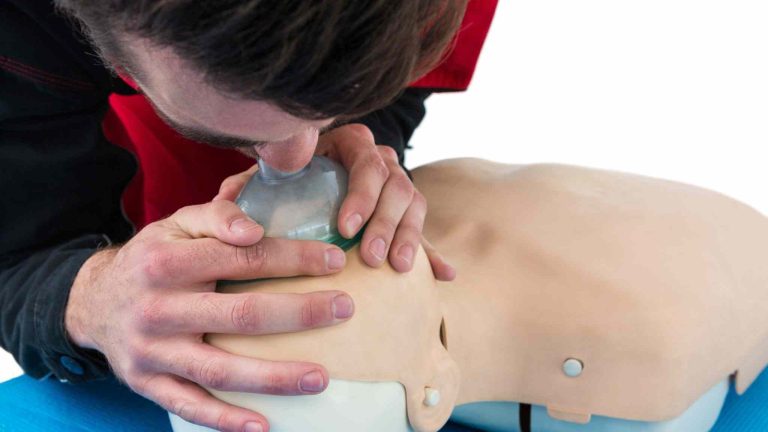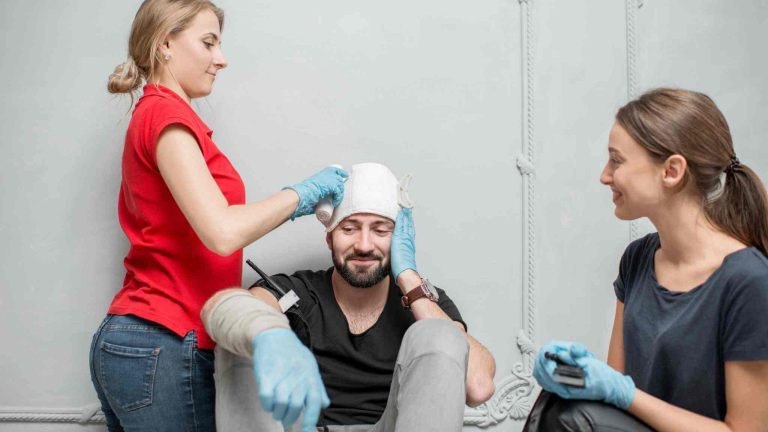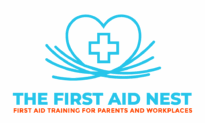What Will I Learn in a First Aid & CPR course?

A first aid class has a lot of content condensed into just a few hours, but we need to remember that this is ‘FIRST’ aid, so we concentrate on how to deliver immediate help and support in a life threatening situation and how to sustain a casualty until help arrives.
Our job as a first aider is not to necessarily be able to fix the problem, but to demonstrate a level of knowledge that keeps the person safe from further harm, stops the situation from escalating and if possible helps to start mending the problem before the emergency services arrive.
What you learn at a first aid course will depend on which course you are doing.
There are three main courses.
- Provide Cardiopulmonary Resuscitation HLTAID009
- Provide First Aid HLTAID011
- Provide First Aid in an Education and Care Setting HLTAID012
CPR Courses
Cardiopulmonary Resuscitation concentrates on the scenario of someone having a cardiac arrest. This scenario is life threatening but with swift care and attention, and the right technique, the heart can be restarted. The first hurdle is to recognise and assess a cardiac arrest. Is the person even breathing? Are they breathing normally?
The techniques that are taught are the guidelines for the Australian resuscitation council, and this includes using a defibrillator to assess a heart rhythm and restart the heart.
The Provide CPR HLTAID009 course also teaches people to fill out the correct documentation and be able to hand over a casualty with all the necessary details.
First Aid Training
The Provide First Aid HLTAID011 course covers pretty much everything you need to know in the most common first aid situations and the Provide First Aid in an Education and Care Setting HLTAID012 covers the same with some added extras specific to caring for young, aged and vulnerable people.
DRSABCD
The course starts with DRSABCD.
You may be familiar with this but we will go over this here:
D – Danger
R – Response
S – Send for help
A – Airway
B – Breathing
C – CPR or Circulation
D – Defibrillation
You will learn DRSABCD for babies under 12 months, children and adults.
Recovery position
You will also learn how to put a casualty into the recovery position. If a casualty is breathing but not conscious or not able to sit or stand, it is best to put them in the recovery position. One of the reasons for this is that this will help to keep their airway clear if they vomit.

Emergency Situations
CPR
There are some practical tasks that you will be asked to perform at a first aid class and these include performing CPR on a baby manikin, a child size manikin and an adult manikin.
You will learn the ratio for CPR which is 30 compressions to 2 rescue breaths. You might see it written as 30:2
Anaphylaxis
Anaphylaxis is a serious, and rapidly life threatening situation, but the good news is there is a fast cure that often works very quickly. In a first aid course you will be taught how to recognise an allergic reaction and how to administer an adrenaline autoinjector.
Asthma
You will learn how to recognise the signs of an asthma attack. This can look different in a child or adult. Children can have difficulty explaining how they feel, ao we would look for more of the clinical signs instead of relying on them telling us how they are feeling. You will learn how to give an inhaler with a spacer device and when to call an ambulance.
Choking
Quick action in a choking situation is vital. Does the person have an ‘effective’ cough? Are they changing colour?
There are some vast differences in helping a choking baby, choking child and a choking adult. We will teach you all 3 techniques and watch you demonstrate them on a manikin until you are confident.
Bleeding and shock
In the bleeding and shock module, we cover non-life threatening bleeding and wound care. It is vitally important to keep a wound clean and know how to effectively stop bleeding until backup arrives.
Nosebleed
There are so many different ways that we have all been taught to deal with a nosebleed. Do we pinch the nose? Lean forward? Lean back? What’s the right way to actually deal with this effectively and when do we need to call emergency services? Find out in our classes.

Broken bones
Learn how to recognise a broken bone and how to place a triangular bandage to keep the casualty comfortable. We will also teach about splints for the fingers and arms or legs. Have you ever heard of using a rolled up magazine? Well now you have!
Sprains
Rest – Ice – Compression – Elevation. This is most of what you need to know to be able to treat a casualty with a sprain and tenderness around the site.
Envenomation
Stay away from those snakes! But if you can’t, it will be useful to learn how to deal with a poisonous bite. This is what we call envenomation. We use PIT – which is the Pressure Immobilisation Technique. This technique helps to restrict access of the venom to the victims’ circulation.
Want more? We’ve got you covered…
Our Baby First Aid Courses
Our baby first aid courses are available in person in your home and online. We run classes in your home with groups of 2, 4 or up to 10 in Sydney & Melbourne and you can book in 3 easy steps!
- Pick your class
- Follow the prompts to purchase
- We will contact you within 24 hours to lock in your date of choice
Our First Aid Certificate Courses
We run most of the popular first aid courses Australia wide. HLTAID011 Provide First Aid, HLTAID009 Provide CPR, HLTAID012 Provide First Aid in an Education & Care Setting, RAMOAP (anaphylaxis), Mental Health first aid and CPR/LVR to name a few.
Book your public spot online or contact us if you have a group of 5+ people for onsite training.
Here are some other resources you may enjoy!
FREE GUIDE: Your Virtual Baby First Aid Kit
FREE GUIDE: Introducing Common Allergy Foods & Allergic Reactions
FREE Workplace Emergency Preparedness Plan: Grab this at the bottom of every page!
Follow for baby & child first aid and allergy info and tips on Instagram, TikTok & Facebook all @thenestcpr
